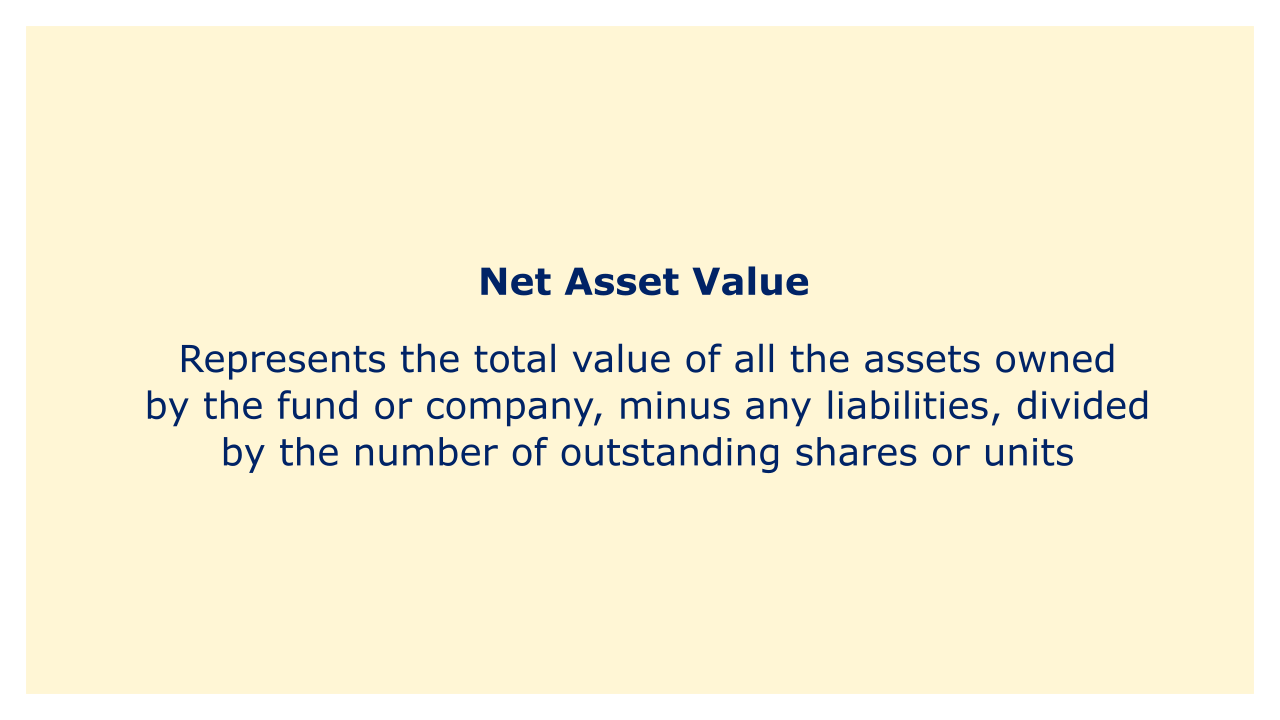 |
| Image: Moneybestpal.com |
A financial indicator called net asset value (NAV) is frequently used to estimate the worth of an investment fund or business. It is calculated by dividing the entire value of the company's or fund's assets by the number of outstanding shares or units.
NAV is computed by deducting any liabilities or debts that the fund or firm owes from the market value of all the assets it owns. The NAV per share or unit is obtained by dividing the resulting sum by the total number of shares or units of the fund or firm that are currently outstanding.
For instance, the net asset value of a mutual fund would be $90 million if its assets and liabilities combined equal $100 million. The NAV per share would be $9 if the fund had 10 million outstanding shares.
Investors can use NAV to determine the underlying worth of their investment, which is why it's a helpful indicator. Using the NAV, investors can assess whether or not the price they are paying for a share or unit of the fund is fair. It may be a sign that an investment is cheap if the NAV per share is higher than the market price, whilst an investment that has an overvalued NAV per share may be the opposite.
